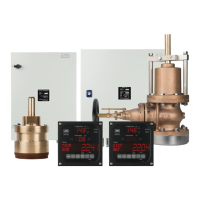iv
Flow of Cardiopulmonary Resuscitation (CPR)
Not breathing or can not judge
Chest compressions
- With each compression, Depress the chest wall
to a depth of approximately 5 cm
- Perform uninterrupted chest compressions at
the rate of about 100 to 120 times per
minute.
Combination of chest compressions and
rescue breaths; omittable Note(
1
)
- Untrained first-aiders only performs chest
com
ressions.
Note (1) Omission of artificial respiration
If you are worried about infection due to
damage in the oral cavity or if you are
hesitant to use mouth-to-mouth artificial
respiration,
If it takes time to prepare the mouthpiece for
artificial respiration, skip the artificial
respiration and proceed to the next.
Arrival of an AED
Turn on the power.
- Use the AED by following its voice prompts.
Fittin
of the electrode pads, etc.
Automatic electrocardiogram
analysis
Do not touch the injured or ill
person.
A person is collapsing.
- Secure the safety of the surrounding area.
- Prevent secondar
disasters.
Electric shock is needed.
Check for response.
Call while tapping the shoulder.
Breathing
Recovery position
- Lay the injured or
ill person on
his/her side and
wait for the arrival
of the emergency
services.
Electric shock is not needed.
Not responding or can not judge
Ask for help.
Make an emergency call.
Ask to bring an AED.
Delivery of electric shock
Listen to the appeal of the
injured or ill person and give
the necessary first-aid
treatment.
Responding
Resume CPR from chest
compressions by following the
voice prompts of the AED.
When the injured or ill
person has been
handed over to the
emergency services or
has started moaning or
breathing normally, lay
him/her on his/her side
in a recovery position
and wait for the arrival
of emergency services.
When to
stop CPR
Check for breathing and judge for
cardiopulmonary arrest.
Check for breathing.
A person is collapsing.
- Secure the safety of the surrounding area.
- Prevent secondar
disasters.
The AED
automatically
analyzes the
heart rhythm
every 2 min.
Artificial respiration Twic Optional Note
1
Cardiopulmonary resuscitation
Chest compressions 30 times
Artificial respiration Twice Optional Note
1

